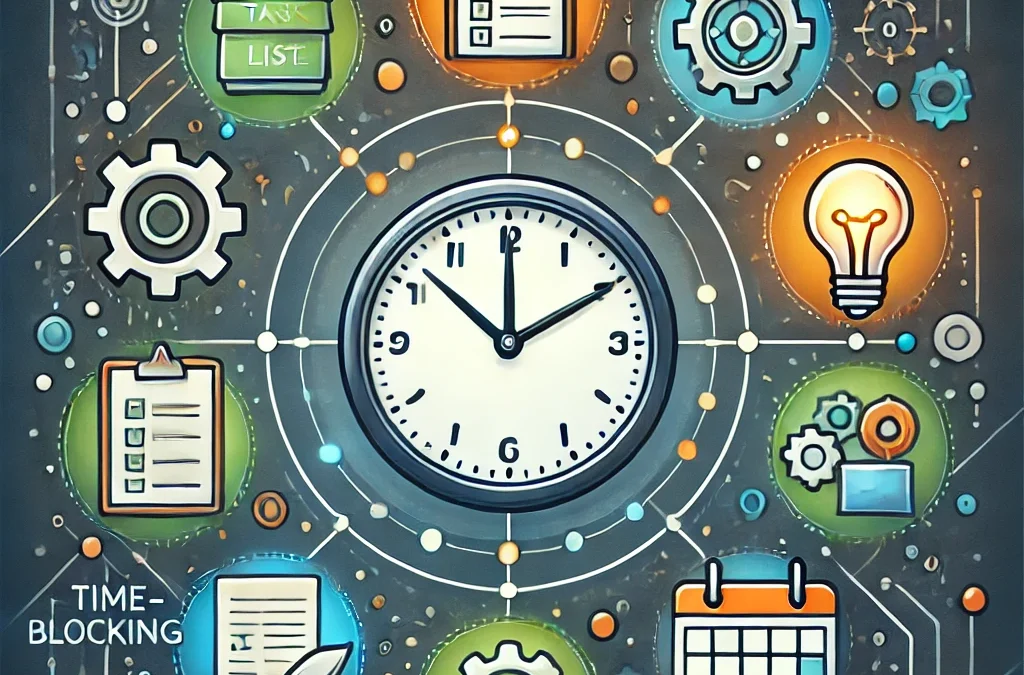10 Proven Productivity Hacks from Industry Leaders
Productivity is at the heart of success for top industry leaders who manage complex projects, large teams, and demanding schedules. Over time, they’ve honed their techniques to maximize efficiency without sacrificing quality. Here are 10 proven productivity hacks from industry leaders, offering strategies you can adopt to make the most of your day.
1. Set Your Top 3 Priorities Daily
Many leaders, including Tim Ferriss, emphasize the importance of identifying your top priorities each day. Known as the “Top 3,” these are the tasks that will have the most impact on your work or personal goals. This technique ensures that you make progress on your most crucial tasks, avoiding distractions that don’t move the needle.
How to Use It:
- At the start of each day, list your top three goals.
- Focus on completing these tasks before moving on to smaller, less significant ones.
- Avoid multitasking until these are completed.
2. Time Blocking for Deep Work
Elon Musk is famous for using time blocking to structure his day in five-minute increments. Time blocking dedicates chunks of time to specific tasks, minimizing multitasking and ensuring focused productivity on a single task without interruptions.
How to Use It:
- Use your calendar to allocate blocks of time to specific tasks, including breaks.
- During each block, eliminate distractions and focus solely on that task.
- Try a mix of 30-minute and 1-hour blocks for deep work sessions.
3. The Pomodoro Technique for Focus
The Pomodoro Technique, used by many executives and creatives, involves working in 25-minute intervals, followed by a 5-minute break. This method prevents burnout and keeps your mind fresh throughout the day, especially when tackling longer projects.
How to Use It:
- Set a timer for 25 minutes and work without distractions.
- Take a 5-minute break, then repeat the cycle four times before taking a longer break.
- Use Pomodoro apps like Tomato Timer or Focus Booster for easier tracking.
4. Delegate and Empower Others
Richard Branson believes in the power of delegation, stressing that leaders should empower their teams by trusting them with responsibilities. By handing off tasks, leaders can focus on strategic decisions while team members grow and contribute.
How to Use It:
- Identify tasks that others on your team are equally capable of handling.
- Delegate tasks with clear instructions and timelines.
- Trust your team, allowing them to take ownership and make decisions.
5. Adopt the Two-Minute Rule for Quick Wins
David Allen, author of Getting Things Done, created the Two-Minute Rule: if a task can be completed in two minutes or less, do it immediately. This prevents small tasks from piling up and crowding your to-do list.
How to Use It:
- Apply the rule whenever you’re about to defer a small task.
- By immediately handling quick tasks like replying to emails or filing documents, you keep your workload light.
- Reserve longer blocks of time for more significant projects.
6. Practice the 80/20 Principle (Pareto Principle)
The Pareto Principle, used by leaders like Warren Buffett, suggests that 80% of results come from 20% of efforts. Focusing on the most impactful tasks, rather than spreading yourself thin, can dramatically improve productivity.
How to Use It:
- Identify the 20% of tasks that yield the greatest results.
- Prioritize these high-impact activities and minimize time spent on less productive ones.
- Regularly review and adjust your focus as your goals evolve.
7. Batch Similar Tasks Together
Industry leaders like Gary Vaynerchuk batch similar tasks to reduce the mental fatigue of switching between different activities. Task batching groups similar tasks together (e.g., emails, meetings, content creation) so you’re not constantly shifting focus.
How to Use It:
- Group tasks like email responses, administrative work, or creative tasks.
- Allocate specific times for each batch rather than interrupting other work.
- Stick to your schedule and avoid breaking up batches whenever possible.
8. Use Automation for Routine Tasks
Leaders such as Neil Patel advocate for using automation to streamline repetitive processes. Automation tools can save hours on tasks like social media posting, email marketing, and data entry, freeing up time for strategic work.
How to Use It:
- Identify routine tasks that could be automated, like email marketing or scheduling.
- Use tools like Zapier, Buffer, or IFTTT to handle these tasks automatically.
- Regularly assess which tasks could benefit from automation as new tools emerge.
9. Limit Meetings and Set an Agenda
Jeff Bezos is known for his “two-pizza rule”—if a meeting can’t be fed by two pizzas, it’s too large. He also emphasizes that every meeting should have a clear agenda and actionable outcomes. Reducing meetings and focusing on agenda-driven conversations can dramatically increase time for productive work.
How to Use It:
- Limit meetings to only those that are necessary, and keep attendee numbers small.
- Always prepare a clear agenda and desired outcomes before any meeting.
- Keep meetings concise, ensuring everyone leaves with actionable next steps.
10. Take Scheduled Breaks for Mental Recharging
Arianna Huffington promotes the importance of rest and mental breaks, advocating for scheduled downtime to prevent burnout. Taking intentional breaks, including lunch breaks and short mental resets, can recharge your energy and boost focus.
How to Use It:
- Set reminders for breaks throughout your workday, and avoid working through them.
- Use breaks to step away from screens—try stretching, walking, or meditating.
- Embrace a regular sleep schedule to ensure you’re mentally sharp each day.
Conclusion
Productivity is about working smarter, not harder. By implementing these proven productivity hacks used by industry leaders—from prioritizing top tasks and time-blocking to delegating and taking scheduled breaks—you can create a more focused, efficient, and balanced workday. Each of these strategies provides a foundation for improving productivity, ensuring you make meaningful progress toward your goals while maintaining mental clarity and well-being.


